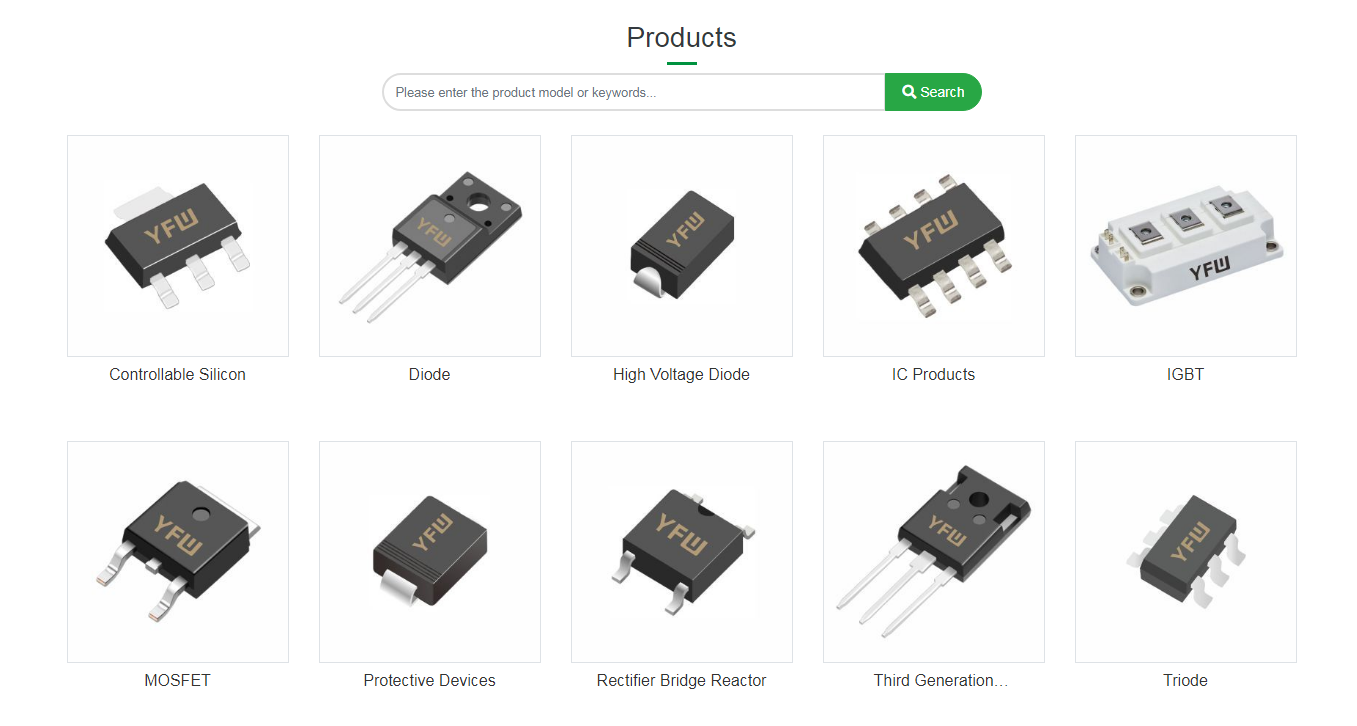Date:2025-03-18 Categories:Industry News Hits:904 From:Guangdong Youfeng Microelectronics Co., Ltd(YFW)
An ideal diode a theoretical electronic component whose main characteristic is that it exhibits zero impedance under forward bias and infinite impedance under reverse bias. In practice, no diode can ever achieve this ideal state perfectly but many BU52011HFV-TR diodes behave close to this ideal state within a certain range of operation. The working principle of an ideal diode based on semiconductor physics. It consists of two types of semiconductor materials, one N-type and the other P-type. At one end of the diode (the P-), impurity atoms introduce additional holes (positively charged "empty" electrons), and at the other end (the N-end), impurity atoms introduce additional electrons (neg charged particles). When the diode is connected to a power source, electrons flow from the N-end to the P-end, and holes flow from the P-end the N-end, forming a current. In the ideal state, an ideal diode has a resistance close to zero under forward bias (i.e., the Pend connected to the positive terminal of the power source and the N-end connected to the negative terminal), allowing current to flow freely. However, when the diode is under bias (i.e., the N-end connected to the positive terminal of the power source and the P-end connected to the negative terminal), the resistance of an diode is infinite, and no current can flow through it. In reality, real diodes will have a small current (called reverse saturation current) flowing through them under reverse bias to thermal excitation. Ideal diodes have a wide range of applications in many electronic devices and systems. Although an ideal diode is a theoretical device, its concept has guided design and use of real diodes to a large extent. Here are some of the areas where diodes (especially those that behave close to an ideal diode) are used:1. Rectifiers: Diodes are the core components of rectifiers, which convert alternating current into direct current. During the forward half-cycle, the diode conducts, current to flow; during the negative half-cycle, the diode is cut off, and the current is zero, thus achieving rectification. 2. Clippers: Des can be used to limit the waveform of a voltage. For example, it can prevent the voltage from exceeding a predetermined positive or negative value. 3. Voltage stabilization: Zener diode is a special type of diode that can operate stably near its reverse breakdown voltage, and it is therefore widely used for voltage stabilization. 4. Sw circuits: The conducting and cutting-off characteristics of a diode make it an ideal electronic switch. For example, it can be used as a switch in logic circuits, pulse, and digital circuits. 5. Mixers and tuners: In a radio receiver, a diode can mix a radio frequency signal with a local oscillator signal to generate an frequency signal, which is a key step in radio signal processing. 6. Optoelectronic devices: Such as photodiodes, laser diodes, and photovolic cells, which are devices that convert light energy and electrical energy into each other. In summary, although an ideal diode is a theoretical device, its concept and working play an important guiding role in the design and application of actual electronic circuits.

Previous:Can a fast recovery diode be interchangeable with a Schottky diode?
Next:NZT560A 1A 80V SOT-223 Marked NZT560A Small Signal Transistor Y Micro Brand